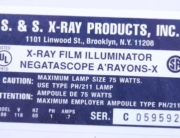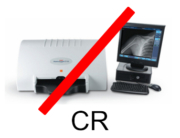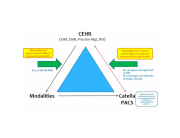When I bought a little “viewbox” manufacturer in 1981 many of my peers told me it was a great move. I had bought something akin to a paper towel manufacturer; something everyone was going to need forever and, better yet, there were a limited number of suppliers and a very stable market for viewboxes.
It was wasn’t until 1983 that our company bought its first PC, and even then nobody could image digital imaging. That first company, American Medical Sales, Inc., kept going until 2010. We had a very good run. We made a lot of great friends, customers and products and learned so much. Once we finally determined it was time to stop making viewboxes, safelights and other film-based products, we were able to take the profitable pieces and reformulate our offerings moving on to an even brighter future.
As I was going through the trauma…and it was traumatic for this entrepreneur…of closing down one operation, making sure all of my employees went on to greener pastures, recouping the value of the former operation and starting up our new venture…I kept wondering what I could do with my contacts and knowledge as I moved forward in our imaging industry.
There were many days that I was full of doubt about what I was planning. But strong support from my partners and friends helped me create a new reality and one that best fits my skill levels and interests.
Over the past ten years much has changed. We have had more consolidation in the dealer networks, CR is a thing of the past and DR prices have fallen so low that dealers are asking that age old question, “what’s next to make us some real profits”.
I suppose that that one thing I thought would never go away was the need for lead aprons. Sure, there have been attempts to create alternatives to x-ray imaging, and these efforts may still come to fruition at some point in the future, but x-ray remains the mainstay of imaging technology. And so the need for lead aprons.
Now comes a European study that says “not so fast”. While the authors don’t foresee the elimination of all protective products, they do say they might not be necessary for patients.
I’m not suggesting that this is something that you should recommend to your clients, but I wanted you to be aware of this “industry talk” in case your clients make mention of it or ask you questions about it.
I’m not sure how big a portion of the radiation protective market patient garments account for…10%, 20%, 30%, but it is something in that range.
Happy reading….click here to read “Patient shielding no longer necessary during imaging exams, top radiology groups say”.
Best regards, Daniel Giesberg








For the most part lead shielding is a matter of patient perception and regulation than necessity. I believe in their use but our exposures are so greatly reduced by the use of digital technology that the secondary radiation is negligible.
As a technologist the use of shielding isn’t a big problem and if the patient is happy than so am I.